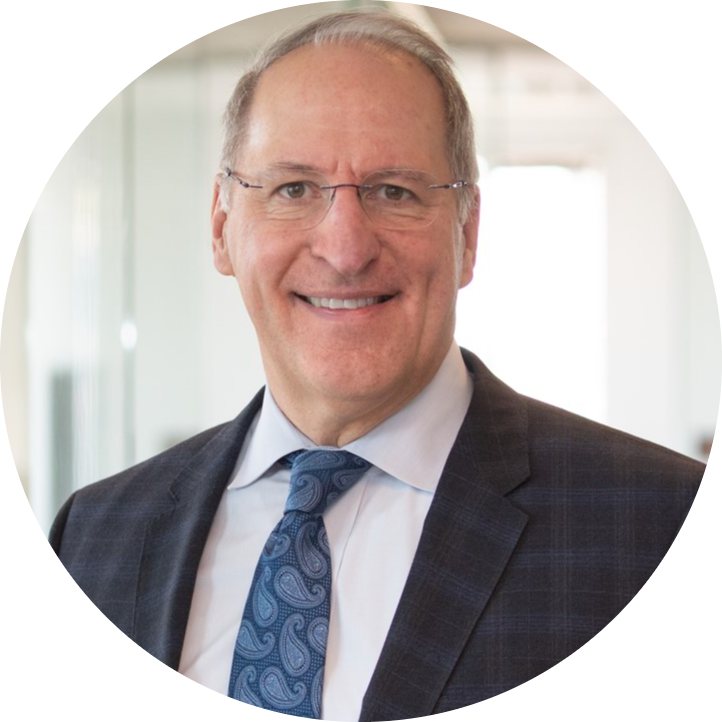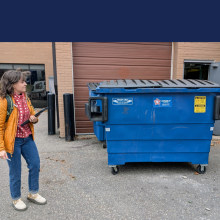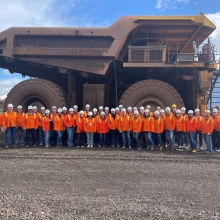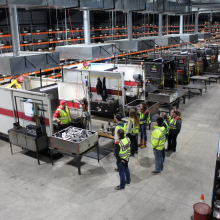Minnesota and Canada’s strong business partnership with Consul General Beth Richardson

By Doug Loon
President and CEO
Minnesota Chamber of Commerce
We had another busy week, but we're not going to talk about the week. We're going to talk about our relationship between Minnesota and our friends to the north in Canada. I am so thrilled to have with me today, Beth Richardson, who is the Consul General of Canada in Minneapolis, and they have an office right here in Minneapolis. Beth is here to share a little bit about the work of the Consul General, her experience there, and what that means to Minnesota and, most importantly, to the business community.
Before I jump in with Beth, I just want to point out that she is going to be our special guest speaker at our upcoming Women in Business Conference on July 23, where she’ll be our keynote speaker. She’ll update the group on the latest developments in Canada and how they relate to Minnesota and the business community.
So, mark your calendars for our Women in Business Minnesota Conference, July 23.
The following is a transcript of the conversation Beth and I had on this week’s episode of the Minnesota Business Podcast.
Doug Loon: Beth, thank you for being with us today. I’ll just say the Minnesota Chamber has had a long relationship with the Consulate. We’re fortunate to have the office here in Minnesota because it’s a key jumping-off point for the relationship between the business community and our friends to the north in Canada. The Consul General provides some really important services. Thanks for being with us.
My first question to you is: share a little bit about yourself, but also what does the Consul General do, and what’s your office’s purpose for being here in Minnesota?
Beth Richardson: Thank you very much for having me, Doug. I’m delighted to be with you today. Our office is based in downtown Minneapolis. We are Canada’s official representation to five states in the Upper Midwest. We’re based in Minnesota because we have the most trade with Minnesota – over $21 billion a year. We are a team of about 20 people that primarily do three things.
First, we help businesses build profitable commercial relationships across the border between Canadian and U.S. companies. Second, we maintain ties with politicians and leaders in the business and nonprofit communities across the five states. Third, we promote people-to-people ties between Canadians and Minnesotans.
DL: When you talk about people-to-people, what does that mean? Are you referring to folks who go back and forth every day, or once a year like me who go up fishing? What does that mean in the context of your office’s work?
BR: The great thing about being on a foreign diplomatic posting in Minnesota is that our relationship isn’t built only by governments or officials – it’s built by millions of people who know each other well. We’re very fortunate to have that.
There are over half a million visits by Canadians to Minnesota every year. They know the state very well, and Minnesotans know Canada very well. That acts as a foundation for our business connections across the border.
DL: Fantastic. Let’s talk about the border first. It’s about 5,500 miles of border between the United States and Canada, and about 450 miles of that is shared with Minnesota. So, we have a big stretch up there. Talk a little bit about what the border looks like today for folks going back and forth. There’s always a lot of national attention on border security, particularly on the southern border. What does that mean for the U.S.-Canada border from your perspective here in Minnesota?
BR: I’d say there are two elements to the border. We want to keep the border as friction-free as possible for trade and visitors, and at the same time, we want to maintain the right amount of friction in terms of border security to make sure we vet the right people and prevent irregular crossings.
Part of our office’s work is to engage with U.S. Customs and Border Protection and the Border Patrol. We work closely with the office in Duluth, Canadian law enforcement agencies like the RCMP and our own Canada Border Services Agency (CBSA). They meet and conduct joint planning across the Upper Midwest to align plans and share surveillance information.
Last December, our government announced a plan to bolster border security with about $1.3 billion in investments. That includes more drones, more surveillance, more boots on the ground and even Black Hawk helicopters patrolling the northern border. These investments help ensure the border remains secure but also open for business.
DL: That was going to be my next question. It is open, right? For anyone planning a visit to Canada this summer – whether for vacation or business – it’s open.
BR: It’s open. And I’ll flag that Canada Day is July 1, so it’s always a great time to visit and celebrate in Canada!
DL: Are you going up to Canada for Canada Day?
BR: I plan to, yes.
DL: Let’s talk about trade because it has become an increasingly important issue. I’d also say it’s growing in significance. Going back to the Trump administration, we saw an intentional effort to bring business back to the Americas. As a result, we saw significant growth in Minnesota’s trade relationship with Canada and also with Mexico. Now, Canada is Minnesota’s largest trading partner in the world. Talk about that growth and the kinds of commodities that are traded back and forth, some of which cross the border multiple times.
BR: Canada has always been America’s largest customer. Most people don’t realize that. They might assume it’s China, but in fact, Canada imports more from the United States than France, Britain, Japan and China combined.
It’s the largest bilateral trading relationship in the world – about a trillion dollars a year. Minnesota exports about $7.3 billion in goods to Canada each year, plus another $1.3 billion in services. Minnesota imports about $14 billion from Canada annually.
The import number is larger because most of it is oil, which is refined here in the St. Paul refineries. So, if you’re flying out of MSP, it’s likely Canadian jet fuel is powering your plane. And when you fill up your car in Minnesota, it’s probably Canadian gas.
Our bilateral relationship spans many sectors. The top three are agriculture, which includes ag tech, farm machinery, and food ingredients; clean tech — including companies like Heliene, the solar company that opened in St. Paul, and water management companies like H2O Innovation that work with places like the St. Cloud water treatment plant; and medical devices and life sciences. Many Minnesota companies like 3M and Boston Scientific have a significant presence in Canada and split their manufacturing between both countries.
DL: So, there’s a lot of interdependencies. At the same time, there are commodities that are unique to Canada and benefit Minnesota because we simply don’t have them here like oats, certain fertilizers and aluminum products. That’s really important to remember as we think about trade.
Let’s close out the trade conversation by discussing where things stand with our trade agreements. For a long time, we had NAFTA, then it was updated to the USMCA during the Trump administration. Where does that stand now from Canada’s perspective? Are we looking at an update, and what is the next step from your office’s perspective?
BR: Canada and the United States have had some form of free trade since 1965. Our first comprehensive free trade agreement was in 1989. The USMCA is up for review in 2026.
The U.S. has signaled that this will be a review, not a renegotiation. We are ready to start that review anytime. In fact, Prime Minister Carney and President Trump met on June 16 at the G7 to discuss this further. They are committed to reaching an agreement on a foundational security and trade framework that will underpin the review within 30 days, so by mid-July.
DL: So, it’s getting started.
BR: It’s getting started.
DL: We certainly hope for smooth progress with that because we want to make sure this trade agreement, which we’ve benefited from for years, continues well into the future.
Lastly, let me just say thank you for being with us, Beth. We look forward to having you join us in July. I’ll give one more pitch: on July 23, Beth will join us for the Women in Business Minnesota program.
Beth, give us a little teaser of what you plan to share at the event on July 23.
BR: Thank you, Doug. I was just talking with the Chamber team about this earlier. I’ve been a career diplomat for about 30 years, and what’s most striking to me is how the nature of leadership has changed over time. It has made it possible for me to become a leader. That’s one of the things I’ll be talking about.
DL: We’ll celebrate that on the 23rd. Beth, thank you for being with us and for being part of the Minnesota Business Podcast. We look forward to catching up with you all next week. Have a great weekend.



